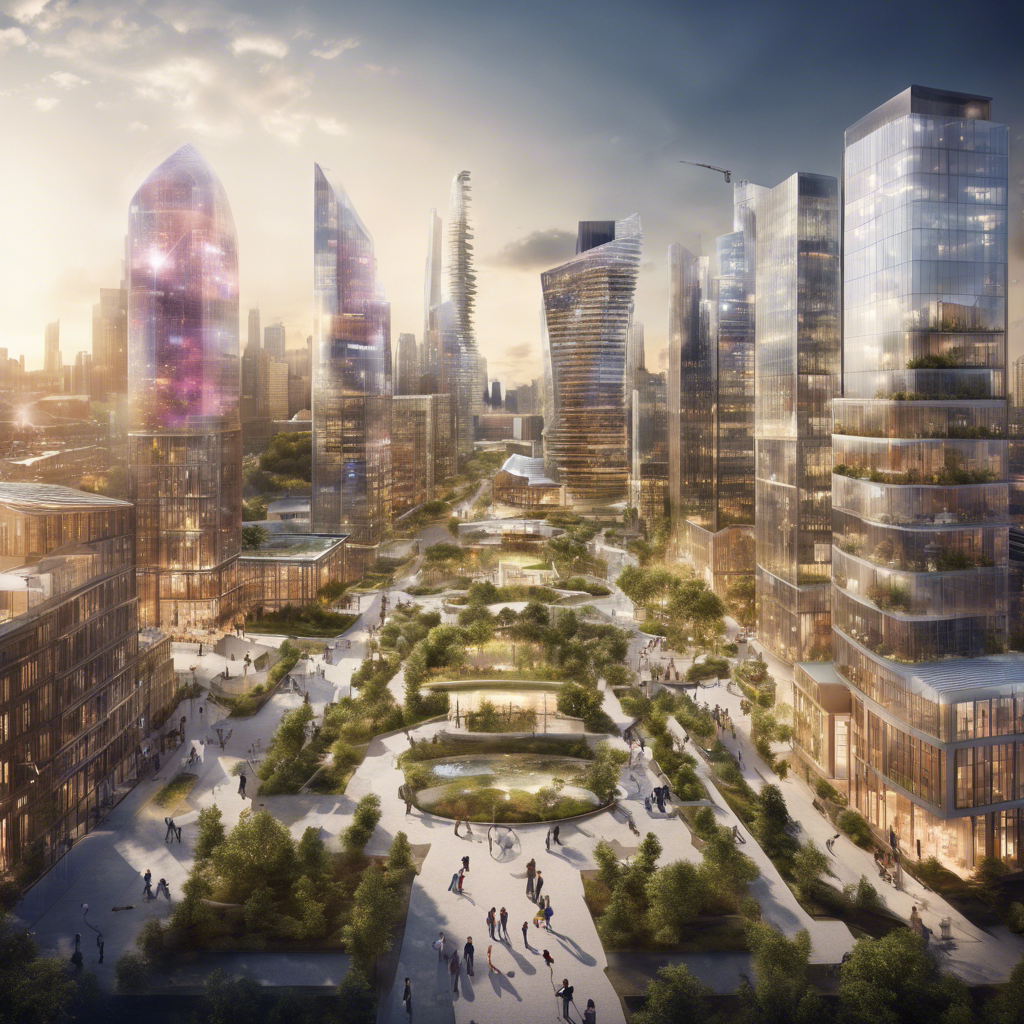Exploring the Impact of Innovation Districts on Urban Development
As the world grapples with the challenges of climate change, inequality, and economic crises, the concept of innovation has taken center stage. Innovation districts, urban landscapes designed to foster creativity and collaboration, have emerged as a powerful tool in addressing these future-facing issues. These districts bring together forward-thinking institutions, startups, and businesses to create vibrant ecosystems that drive economic growth and spark transformative change. In this article, we delve into the world of innovation districts, exploring their influence on the built environment and their potential to reshape cities for a collaborative future.
Innovation Districts: Redefining Urban Development
A Model for Economic Vitality and Originality
Innovation districts, as defined by The Brookings Institution, are concentrated geographies where institutions, companies, startups, and accelerators converge. These districts prioritize mixed-use development, blending housing, office spaces, and commercial amenities in compact and transit-accessible locations. By revitalizing underperforming neighborhoods, innovation districts attract innovative enterprises and a skilled workforce, creating a collaborative ecosystem that drives economic vitality and originality.
The Evolution of Innovation Districts
From Economic Growth to Design-Oriented Concepts
The term “innovation district” has evolved from being a mere economic growth metric to a more design-oriented concept. These districts reflect the mega-trends in urban design, economic influence, and social connectivity. With a focus on physical proximity, innovation districts are walkable neighborhoods where housing, jobs, and amenities seamlessly intertwine. They encourage productive, inclusive, and sustainable economic development, meeting the future anticipations of cities.
The Impact of Innovation Districts
Catalysts for Growth, Collaboration, and Social Equity
Innovation districts serve as catalysts for the creation and expansion of firms and jobs, facilitating cross-sector collaboration among companies, entrepreneurs, universities, researchers, and investors. By strategically locating near low- and moderate-income neighborhoods, these districts address social inequality and expand employment and educational opportunities. They also counter urban sprawl by optimizing mass transit, densifying residential and employment patterns, and revitalizing urban cores.
The Components of Innovation Districts
Economic, Physical, and Networking Assets
Innovation districts are a careful amalgamation of economic assets, including research and medical institutions, large corporations, startups, and visionary entrepreneurs. These districts also feature incubators, accelerators, proof-of-concept centers, educational institutions, and shared workplaces that shape the skills required for an innovation-driven economy. Neighborhood amenities, such as medical offices, grocery stores, restaurants, and local retail, complete the economic ecosystem. The physical elements, including designed public and private spaces, streets, and infrastructure, increase connectivity and collaboration within the district.
Case Studies: Transforming Cities through Innovation Districts
1. Climate Innovation District, Leeds, United Kingdom:
The Climate Innovation District in Leeds aims to convert a central brownfield site into a sustainable, mixed-use neighborhood. The masterplan, designed by White Arkitekter and Citu, integrates green infrastructure to improve air quality, reduce urban heat island effect, and enhance the overall quality of life for residents. The district embraces Scandinavian urban densities and principles, providing access to a range of social and green spaces and prioritizing non-vehicular movement.
2. Innovation District, Ho Chi Minh City, Vietnam:
Ho Chi Minh City’s innovation district, designed by Sasaki, envisions a diverse innovation ecosystem that connects research, entrepreneurship, academia, industry, and the local community. The district aims to involve communities and society at the core of its innovation activities while ensuring long-term ecological and environmental resilience. This district represents a unique opportunity to expand the traditional triple helix model and create a more inclusive innovation environment.
3. Oslo Science City, Oslo, Norway:
Oslo Science City, designed by Bjarke Ingels Group and A-Lab, aims to create a physical framework for Norway’s innovation environment. With a focus on renewable energy and circular economic principles, the district aims to be a net zero-emission area. The masterplan features environmentally friendly buildings, extensive tree planting, emission-free mobility, and climate adaptation solutions, contributing to Oslo’s transition to a more sustainable future.
4. Urban Tech District, Al Jaddaf, Dubai:
The Urban Tech District in Dubai, developed by URB, aims to generate jobs in urban technologies, education, and training while fostering a collaborative tech ecosystem. The district provides facilities for research, conferences, business incubations, and shared workspaces. By integrating technologies in city planning, the district seeks to address environmental challenges, develop equitable living conditions, and inform the evolution of future cities.
Conclusion:
Innovation districts are redefining the way cities cultivate originality, economic vitality, and collaboration. These urban landscapes bring together institutions, startups, and businesses to create vibrant ecosystems that drive economic growth and spark transformative change. By prioritizing mixed-use development, innovation districts revitalize underperforming neighborhoods, attract innovative enterprises, and foster a skilled workforce. As cities face future-facing challenges, innovation districts offer a model for addressing density, accessibility, and adaptability in the built environment. By embracing the principles of diversity, equity, and sustainability, innovation districts have the potential to reshape cities for a collaborative and prosperous future.











